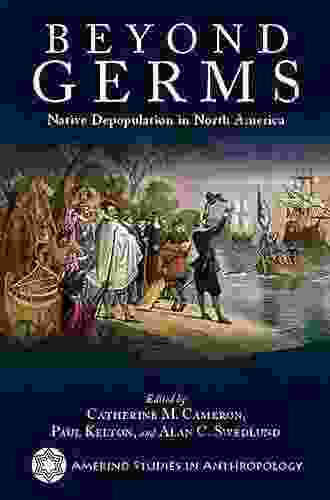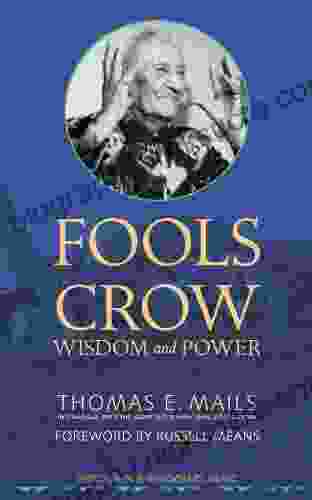Native Depopulation in North America: Amerind Studies in Archaeology

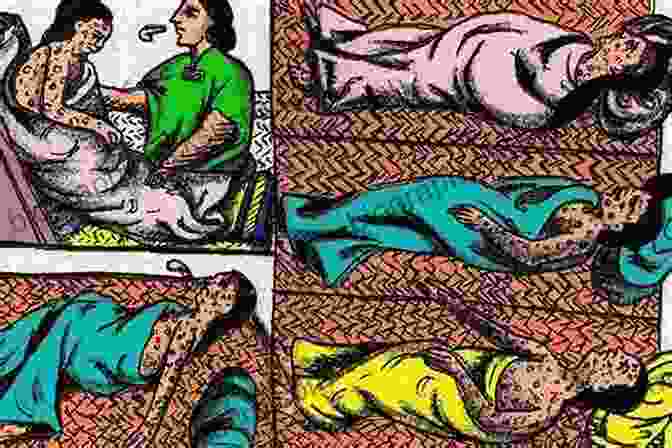
The Pre-Columbian Period
Prior to the arrival of European colonists in North America, the continent was home to an estimated 10-15 million indigenous people belonging to hundreds of distinct tribes and linguistic groups. These Native Americans had thrived in North America for thousands of years, developing complex societies and agricultural practices that sustained their populations.
5 out of 5
| Language | : | English |
| File size | : | 5405 KB |
| Text-to-Speech | : | Enabled |
| Screen Reader | : | Supported |
| Enhanced typesetting | : | Enabled |
| Word Wise | : | Enabled |
| Print length | : | 275 pages |
The pre-Columbian period was characterized by relative population stability, with natural population growth and decline cycles balanced by successful adaptation to the environment. However, the arrival of European explorers and settlers in the late 15th and 16th centuries would have a devastating impact on Native American populations.
The Columbian Exchange
The arrival of Europeans in the Americas initiated a process known as the Columbian Exchange, which involved the exchange of plants, animals, and diseases between the Old World and the New World.
While the exchange brought new crops and technologies to the Americas, it also brought deadly diseases to which Native Americans had no immunity. Diseases such as smallpox, measles, and influenza spread rapidly through indigenous populations, causing widespread death and depopulation.
Direct Conflict and Violence
In addition to disease, Native Americans also faced direct conflict and violence from European colonists. As settlers expanded their territories and sought to exploit the resources of the Americas, they often clashed with indigenous tribes.
These conflicts resulted in the loss of Native American lives, the displacement of populations, and the disruption of traditional ways of life. The use of forced labor and the establishment of reservations further contributed to the decline of Native American populations.
Archaeological Evidence
Archaeological research has played a significant role in documenting the impact of depopulation on Native American populations in North America. Archaeologists have used various methods to investigate demographic changes, including:
- Population Estimates: By studying the size and distribution of archaeological sites, archaeologists can estimate the size and density of past populations.
- Mortuary Analysis: Examining burial practices and the frequency of skeletal remains can provide insights into mortality rates and population health.
- Paleoenvironmental Studies: Analyzing plant and animal remains from archaeological sites can reveal changes in subsistence patterns and environmental conditions that may have influenced population dynamics.
Archaeological studies have shown that Native American populations experienced significant declines in the centuries following European contact. In some regions, populations declined by as much as 90%.
Long-Term Impacts
The depopulation of Native Americans in North America had profound and lasting impacts on both the indigenous population and the course of history:
- Loss of Lives: The loss of millions of Native Americans due to disease and conflict had a devastating impact on their societies and cultures.
- Disruption of Communities: Depopulation disrupted traditional social structures, family relationships, and community networks.
- Loss of Knowledge: The death of Native American elders and spiritual leaders led to the loss of valuable knowledge and traditional practices.
- Marginalization: The decimation of Native American populations and the establishment of reservations marginalized indigenous peoples and limited their opportunities for social, economic, and political advancement.
The depopulation of Native Americans in North America was a tragic and complex event that forever altered the demographic and cultural landscape of the continent. Through archaeological research, we continue to gain insights into the causes and consequences of this devastating period in history, allowing us to better understand the resilience and perseverance of Native American communities.
5 out of 5
| Language | : | English |
| File size | : | 5405 KB |
| Text-to-Speech | : | Enabled |
| Screen Reader | : | Supported |
| Enhanced typesetting | : | Enabled |
| Word Wise | : | Enabled |
| Print length | : | 275 pages |
Do you want to contribute by writing guest posts on this blog?
Please contact us and send us a resume of previous articles that you have written.
 Fiction
Fiction Non Fiction
Non Fiction Romance
Romance Mystery
Mystery Thriller
Thriller SciFi
SciFi Fantasy
Fantasy Horror
Horror Biography
Biography Selfhelp
Selfhelp Business
Business History
History Classics
Classics Poetry
Poetry Childrens
Childrens Young Adult
Young Adult Educational
Educational Cooking
Cooking Travel
Travel Lifestyle
Lifestyle Spirituality
Spirituality Health
Health Fitness
Fitness Technology
Technology Science
Science Arts
Arts Crafts
Crafts DIY
DIY Gardening
Gardening Petcare
Petcare Robert Ardrey
Robert Ardrey Hill Gates
Hill Gates Linnea Dunne
Linnea Dunne William H Frey
William H Frey Barbara Taylor
Barbara Taylor Barbara Gastel
Barbara Gastel Fabien Clavel
Fabien Clavel Martin Sternstein
Martin Sternstein Jonathan Kellerman
Jonathan Kellerman Roy Porter
Roy Porter Isabel Fonseca
Isabel Fonseca Marshall Jon Fisher
Marshall Jon Fisher Beth Miller
Beth Miller Tami Anastasia
Tami Anastasia Bernard Marr
Bernard Marr Ron Lemaster
Ron Lemaster David Cockburn
David Cockburn Julie L Spencer
Julie L Spencer Ronald Wheeler
Ronald Wheeler Kate Darling
Kate Darling T C Edge
T C Edge Sampson Davis
Sampson Davis Editors Of Southern Living Magazine
Editors Of Southern Living Magazine Khurshed Batliwala
Khurshed Batliwala Jen Houcek
Jen Houcek Mark Young
Mark Young Jennifer Traig
Jennifer Traig Barry Burd
Barry Burd Jonathan Bergmann
Jonathan Bergmann Nadine Hays Pisani
Nadine Hays Pisani Yuval Noah Harari
Yuval Noah Harari Lew Freedman
Lew Freedman Rhonda Belle
Rhonda Belle Percy Boomer
Percy Boomer Jennifer Estep
Jennifer Estep David Thomas
David Thomas Rachel Dash
Rachel Dash Elizabeth George Speare
Elizabeth George Speare John Garrity
John Garrity Scott Mactavish
Scott Mactavish Graham Farmelo
Graham Farmelo Jutta Schickore
Jutta Schickore Sam Kean
Sam Kean Mykel Hawke
Mykel Hawke Michael Palin
Michael Palin Charlotte Browne
Charlotte Browne Scarlett Thomas
Scarlett Thomas Suzanne Wylde
Suzanne Wylde Jeffrey Jensen Arnett
Jeffrey Jensen Arnett Maha Alkurdi
Maha Alkurdi Daniel T Willingham
Daniel T Willingham Daniel S Lobel Phd
Daniel S Lobel Phd Geert Hofstede
Geert Hofstede Emma Brockes
Emma Brockes Joanna Hunt
Joanna Hunt Otto Scharmer
Otto Scharmer Linda Welters
Linda Welters Sam Nadler
Sam Nadler Jill Brown
Jill Brown John Sandford
John Sandford Jenn Mcallister
Jenn Mcallister Nick Bollettieri
Nick Bollettieri Kyle Butler
Kyle Butler Kit Yates
Kit Yates Yuki Mano
Yuki Mano Scott Westerfeld
Scott Westerfeld Jack Newman
Jack Newman Gordon Witteveen
Gordon Witteveen Rob Rains
Rob Rains Tim Marshall
Tim Marshall Patrick Sweeney
Patrick Sweeney Linda Carroll
Linda Carroll Rachel Morgan
Rachel Morgan F William Lawvere
F William Lawvere P J Agness
P J Agness Robert A Baruch Bush
Robert A Baruch Bush Brad Burns
Brad Burns Basudeb Bhatta
Basudeb Bhatta Jeff Belanger
Jeff Belanger Catherine Shainberg
Catherine Shainberg Ryan A Pedigo
Ryan A Pedigo Elliott Vandruff
Elliott Vandruff Massimo Cossu Nicola Pirina
Massimo Cossu Nicola Pirina Master Gamer
Master Gamer James Randi
James Randi Barbara Bassot
Barbara Bassot Kenneth Wilgus Phd
Kenneth Wilgus Phd Prince Asare
Prince Asare Donald R Gallo
Donald R Gallo Shannon Reilly
Shannon Reilly David Taylor
David Taylor Joshua G Shifrin
Joshua G Shifrin J Michael Veron
J Michael Veron Richard Weissbourd
Richard Weissbourd Richard Meadows
Richard Meadows Bill Mckibben
Bill Mckibben Ascencia
Ascencia Rob Pope
Rob Pope Helen Kara
Helen Kara Nina Manning
Nina Manning Stan Tekiela
Stan Tekiela Clayton King
Clayton King Rob Hutchings
Rob Hutchings Eddie Merrins
Eddie Merrins Eric Engle
Eric Engle Melissa Gomes
Melissa Gomes Bridget Flynn Walker Phd
Bridget Flynn Walker Phd Leon Mccarron
Leon Mccarron Richard Scott
Richard Scott Robin Nixon
Robin Nixon Leah Cullis
Leah Cullis John Aldridge
John Aldridge Christopher L Heuertz
Christopher L Heuertz John Quick
John Quick Barbara Mertz
Barbara Mertz Ralph Galeano
Ralph Galeano Dustin Salomon
Dustin Salomon Craig Martin
Craig Martin Bb
Bb Grey Owl
Grey Owl Mark Kurlansky
Mark Kurlansky Bill Milliken
Bill Milliken Julie Buxbaum
Julie Buxbaum Edward Lee
Edward Lee John Lister Kaye
John Lister Kaye Rick Joyner
Rick Joyner Thomas French
Thomas French Colleen Alexander Roberts
Colleen Alexander Roberts Charlie Shamp
Charlie Shamp Cait Stevenson
Cait Stevenson Edith Grossman
Edith Grossman Scott Malthouse
Scott Malthouse Rebecca Rupp
Rebecca Rupp Steve Burrows
Steve Burrows Elizabeth Lockwood
Elizabeth Lockwood Gordon H Chang
Gordon H Chang Luke Gilkerson
Luke Gilkerson Rowan Jacobsen
Rowan Jacobsen Nicholas Wolterstorff
Nicholas Wolterstorff Bagele Chilisa
Bagele Chilisa Lynn Mann
Lynn Mann David Klausmeyer
David Klausmeyer Paul Doiron
Paul Doiron Jane Butel
Jane Butel Mitch Prinstein
Mitch Prinstein Malcolm Hebron
Malcolm Hebron Mark H Newman
Mark H Newman Breanna Hayse
Breanna Hayse Chris Bennett
Chris Bennett Leslie Stager
Leslie Stager Peter Martin
Peter Martin John H Mcwhorter
John H Mcwhorter Leia Stone
Leia Stone James M Collins
James M Collins Robin Mcmillan
Robin Mcmillan Macauley Lord
Macauley Lord Fred Mitchell
Fred Mitchell Barry Friedman
Barry Friedman Ben Povlow
Ben Povlow Jaymin Eve
Jaymin Eve Diane Cardwell
Diane Cardwell Ellen Notbohm
Ellen Notbohm Christine Kenneally
Christine Kenneally Jayanti Tambe
Jayanti Tambe Eugene V Resnick
Eugene V Resnick Mark Rashid
Mark Rashid Reprint Edition Kindle Edition
Reprint Edition Kindle Edition Glenna Mageau
Glenna Mageau Lock Gareth
Lock Gareth Sharon Dukett
Sharon Dukett Autumn Carpenter
Autumn Carpenter Jack Andraka
Jack Andraka Joshua Hammer
Joshua Hammer Michael Wood
Michael Wood David A Bogart
David A Bogart Allan V Horwitz
Allan V Horwitz Mike Massie
Mike Massie Ben Collins
Ben Collins Cary J Griffith
Cary J Griffith Kindle Edition
Kindle Edition Jim Fay
Jim Fay Stephanie Fritz
Stephanie Fritz Marie Rutkoski
Marie Rutkoski Susan Nance
Susan Nance J Bruce Brackenridge
J Bruce Brackenridge David Starbuck Smith
David Starbuck Smith Marc Loy
Marc Loy R L Medina
R L Medina Stefan Ecks
Stefan Ecks Basu Shanker
Basu Shanker Clifford Herriot
Clifford Herriot Meghan L Marsac
Meghan L Marsac St Louis Post Dispatch
St Louis Post Dispatch Dan Golding
Dan Golding Susan Dennard
Susan Dennard Debbie M Schell
Debbie M Schell Gerald Beaudry
Gerald Beaudry Joseph Alton M D
Joseph Alton M D Dave Rearwin
Dave Rearwin Jamie Margolin
Jamie Margolin Daniel J Barrett
Daniel J Barrett Arny Alberts
Arny Alberts Anthony Edwards
Anthony Edwards Dan R Lynch
Dan R Lynch Nicholas Sparks
Nicholas Sparks Bobbie Faulkner
Bobbie Faulkner Spencer Wells
Spencer Wells Lynn Rosen
Lynn Rosen John Henry Phillips
John Henry Phillips Nick Neely
Nick Neely Hollis Lance Liebman
Hollis Lance Liebman Barry Rabkin
Barry Rabkin Eliza Reid
Eliza Reid Steven Hawthorne
Steven Hawthorne David Aretha
David Aretha Pearson Education
Pearson Education Eric Leiser
Eric Leiser John G Robertson
John G Robertson Titus M Kennedy
Titus M Kennedy John Kimantas
John Kimantas Kenton Kroker
Kenton Kroker James Syhabout
James Syhabout James Kilgo
James Kilgo Barry Johnston
Barry Johnston Shayla Black
Shayla Black Bryan Peterson
Bryan Peterson Mike Stanton
Mike Stanton Emily Chappell
Emily Chappell Craig Romano
Craig Romano Wanda Priday
Wanda Priday Joanne Glenn
Joanne Glenn James Duggan
James Duggan Ernie Morton
Ernie Morton Tori Day
Tori Day Jane Hardwicke Collings
Jane Hardwicke Collings Nicole Martin
Nicole Martin Mike Commito
Mike Commito Dr Michael P Masters
Dr Michael P Masters Cindy Post Senning
Cindy Post Senning Jeremy Sweet
Jeremy Sweet Kara Goucher
Kara Goucher Guy P Harrison
Guy P Harrison Dacher Keltner
Dacher Keltner Gary Soto
Gary Soto David Beaupre
David Beaupre Julian I Graubart
Julian I Graubart Richard Harris
Richard Harris Stephen J Bavolek
Stephen J Bavolek W Hamilton Gibson
W Hamilton Gibson Vanessa Ogden Moss
Vanessa Ogden Moss George Macdonald
George Macdonald Barbara Illowsk
Barbara Illowsk Jessica Smartt
Jessica Smartt Nick Townsend
Nick Townsend Kam Knight
Kam Knight Jennifer Pharr Davis
Jennifer Pharr Davis Chiara Sparks
Chiara Sparks Reelav Patel
Reelav Patel Robin Knox Johnston
Robin Knox Johnston Jenna Helland
Jenna Helland Samantha Fitts
Samantha Fitts Deanna Roy
Deanna Roy Trish Kuffner
Trish Kuffner Karen Bush
Karen Bush Oliver T Spedding
Oliver T Spedding Ben Goldacre
Ben Goldacre Boy Scouts Of America
Boy Scouts Of America Jude Currivan
Jude Currivan Gay Robins
Gay Robins Suzanne Leonhard
Suzanne Leonhard Vanessa Garbin
Vanessa Garbin James Duthie
James Duthie Sport Hour
Sport Hour Martin Dugard
Martin Dugard Barry Glassner
Barry Glassner Emma Walker
Emma Walker Laura Ingalls Wilder
Laura Ingalls Wilder Diane Yancey
Diane Yancey Cheryl Erwin
Cheryl Erwin Victor Seow
Victor Seow Donald Frias
Donald Frias Sean Mcindoe
Sean Mcindoe Jenny Chandler
Jenny Chandler Betty Stone
Betty Stone Max Marchi
Max Marchi Catherine J Allen
Catherine J Allen Bruce Pascoe
Bruce Pascoe Shmuel Peerless
Shmuel Peerless Wayne B Chandler
Wayne B Chandler Frederick Douglass Opie
Frederick Douglass Opie Jean Illsley Clarke
Jean Illsley Clarke Erik J Brown
Erik J Brown Blair Braverman
Blair Braverman Howard Zinn
Howard Zinn Diane Musho Hamilton
Diane Musho Hamilton V B Alekseev
V B Alekseev Paul Van Lierop
Paul Van Lierop Cara Koscinski
Cara Koscinski Roanne Van Voorst
Roanne Van Voorst Jake Anderson
Jake Anderson Erica B Marcus
Erica B Marcus Michelle Rigler
Michelle Rigler Tim Ingold
Tim Ingold Beau Bradbury
Beau Bradbury Stanislas Dehaene
Stanislas Dehaene Barbara Ann Kipfer
Barbara Ann Kipfer Monica Hesse
Monica Hesse Beebe Bahrami
Beebe Bahrami Mackenzi Lee
Mackenzi Lee Timothy Pakron
Timothy Pakron Visual Arts
Visual Arts Jade Barrett
Jade Barrett David Jamieson Bolder
David Jamieson Bolder S K Gupta
S K Gupta Benita Bensch
Benita Bensch Mike Allison
Mike Allison Carlo Collodi
Carlo Collodi Charles Buist
Charles Buist Thomas Bulfinch
Thomas Bulfinch Nichole Carpenter
Nichole Carpenter Hunbatz Men
Hunbatz Men Daniel P Huerta
Daniel P Huerta Mike Loades
Mike Loades Farley Mowat
Farley Mowat Barzin Pakandam
Barzin Pakandam Buddy Levy
Buddy Levy Bob Holtzman
Bob Holtzman John J Robinson
John J Robinson Marco Grandis
Marco Grandis Kate Williams
Kate Williams Barbara Russell
Barbara Russell Mark Ellyatt
Mark Ellyatt Rachelle Zukerman
Rachelle Zukerman Margaret Owen
Margaret Owen Mina Lebitz
Mina Lebitz Ellen Lewin
Ellen Lewin Joseph Epes Brown
Joseph Epes Brown Lily Collins
Lily Collins Smart Reads
Smart Reads Harvey Wittenberg
Harvey Wittenberg Ian Leslie
Ian Leslie Barbara Neiman
Barbara Neiman Mark Mayfield
Mark Mayfield David Burch
David Burch J C Cervantes
J C Cervantes Jay Abramson
Jay Abramson Barbara Rogoff
Barbara Rogoff Jim Wharton
Jim Wharton Matt Taddy
Matt Taddy Yang Kuang
Yang Kuang John C Norcross
John C Norcross Kathleen Masters
Kathleen Masters Catherine M Cameron
Catherine M Cameron Achille Rubini
Achille Rubini Steven Bell
Steven Bell John D Barrow
John D Barrow S E Hinton
S E Hinton Pat Shipman
Pat Shipman Eric Franklin
Eric Franklin Burt L Standish
Burt L Standish Gary Lincoff
Gary Lincoff Brian Switek
Brian Switek Pavla Kesslerova
Pavla Kesslerova Gabriyell Sarom
Gabriyell Sarom William Byers
William Byers Chris Eberhart
Chris Eberhart William Wasserman
William Wasserman Charles River Editors
Charles River Editors Rebecca Solnit
Rebecca Solnit Ron Avery
Ron Avery David Abram
David Abram Toby A H Wilkinson
Toby A H Wilkinson Print Replica Kindle Edition
Print Replica Kindle Edition Steve Biddulph
Steve Biddulph Jeff Alt
Jeff Alt Janna Levin
Janna Levin Brandon Royal
Brandon Royal Muhammad Zulqarnain
Muhammad Zulqarnain Rachel Smith
Rachel Smith T H White
T H White Nancy E Willard
Nancy E Willard Tom Miller
Tom Miller Becca Anderson
Becca Anderson Mark Twain
Mark Twain Proper Education Group
Proper Education Group Simon Spurrier
Simon Spurrier Lewis Thomas
Lewis Thomas Mary A Fristad
Mary A Fristad Valerie Pollmann R
Valerie Pollmann R Mia Scotland
Mia Scotland Richard H Immerman
Richard H Immerman Geoffrey Finch
Geoffrey Finch Erica Schultz
Erica Schultz Barry Rhodes
Barry Rhodes Thomas Lumley
Thomas Lumley Lawrence Baldassaro
Lawrence Baldassaro Leonard M Adkins
Leonard M Adkins Alastair Hannay
Alastair Hannay Justin Sirois
Justin Sirois John Whitman
John Whitman Robert Hogan
Robert Hogan Constanze Niedermaier
Constanze Niedermaier Stephen K Sanderson
Stephen K Sanderson Ben Sedley
Ben Sedley Beau Miles
Beau Miles Denton Salle
Denton Salle Joseph Schmuller
Joseph Schmuller Peter Wacht
Peter Wacht James Koeper
James Koeper Crystal Duffy
Crystal Duffy Craig Lambert
Craig Lambert James C Radcliffe
James C Radcliffe Jesse Liberty
Jesse Liberty Mike Swedenberg
Mike Swedenberg Sergei Urban
Sergei Urban Ryan Higa
Ryan Higa Sara Shepard
Sara Shepard Baruch Englard
Baruch Englard Arnold G Nelson
Arnold G Nelson Randy Baker
Randy Baker Barbara Kennard
Barbara Kennard Chris Cage
Chris Cage Melissa Haag
Melissa Haag Bashir Hosseini Jafari
Bashir Hosseini Jafari Brian Gilbert
Brian Gilbert Casey Watson
Casey Watson Ping Li
Ping Li Susan Scott
Susan Scott Cynthia Levinson
Cynthia Levinson Richard Chun
Richard Chun Violet Moller
Violet Moller Dr Craig Malkin
Dr Craig Malkin Vincent Bossley
Vincent Bossley Chuck Missler
Chuck Missler Ray Comfort
Ray Comfort Farzana Nayani
Farzana Nayani Chris Mooney
Chris Mooney Kara Tippetts
Kara Tippetts Danny Staple
Danny Staple Charlotte Booth
Charlotte Booth Steven Rinella
Steven Rinella Hongyu Guo
Hongyu Guo Molly E Lee
Molly E Lee Mike High
Mike High Charles Soule
Charles Soule Jessica F Shumway
Jessica F Shumway Barry J Kemp
Barry J Kemp Babu The Panda
Babu The Panda Candice Davie
Candice Davie Dave Karczynski
Dave Karczynski Janis Keyser
Janis Keyser Bonnie Tsui
Bonnie Tsui Peter K Tyson
Peter K Tyson Scott Reed
Scott Reed Daniel M Koretz
Daniel M Koretz W Scott Elliot
W Scott Elliot Alexandra Andrews
Alexandra Andrews Temple West
Temple West Graham R Gibbs
Graham R Gibbs Helen Fisher
Helen Fisher Mick Conefrey
Mick Conefrey Sam Cowen
Sam Cowen Monta Z Briant
Monta Z Briant Conor Nolan
Conor Nolan Sam Harris
Sam Harris C R Hallpike
C R Hallpike Philip Maffetone
Philip Maffetone Tara Brach
Tara Brach Christopher Taylor Ma Lmft
Christopher Taylor Ma Lmft Ryan T White
Ryan T White Dustin Hansen
Dustin Hansen Holger Schutkowski
Holger Schutkowski Ken Xiao
Ken Xiao Edwin R Sherman
Edwin R Sherman Dr Faith G Harper
Dr Faith G Harper Jean Smith
Jean Smith Larry Dane Brimner
Larry Dane Brimner Debra Kilby
Debra Kilby Noah Brown
Noah Brown Siddhartha Rao
Siddhartha Rao Chase Hill
Chase Hill Laura Pavlov
Laura Pavlov Chadd Vanzanten
Chadd Vanzanten Richard J Dewhurst
Richard J Dewhurst
Light bulbAdvertise smarter! Our strategic ad space ensures maximum exposure. Reserve your spot today!

 John UpdikeUsing Mindfulness to Reclaim Your Brain From Tech: A Comprehensive Guide to...
John UpdikeUsing Mindfulness to Reclaim Your Brain From Tech: A Comprehensive Guide to... Pablo NerudaFollow ·14k
Pablo NerudaFollow ·14k Fred FosterFollow ·13.7k
Fred FosterFollow ·13.7k Jeremy CookFollow ·7k
Jeremy CookFollow ·7k Phil FosterFollow ·16.4k
Phil FosterFollow ·16.4k Floyd RichardsonFollow ·2.2k
Floyd RichardsonFollow ·2.2k Harold BlairFollow ·14.7k
Harold BlairFollow ·14.7k W.H. AudenFollow ·12k
W.H. AudenFollow ·12k August HayesFollow ·11.3k
August HayesFollow ·11.3k
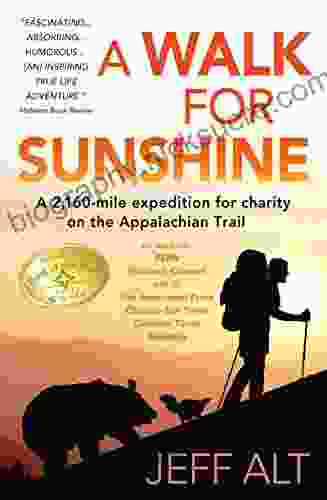
 Israel Bell
Israel BellEmbark on an Epic 160-Mile Expedition for Charity on the...
Prepare yourself for an...
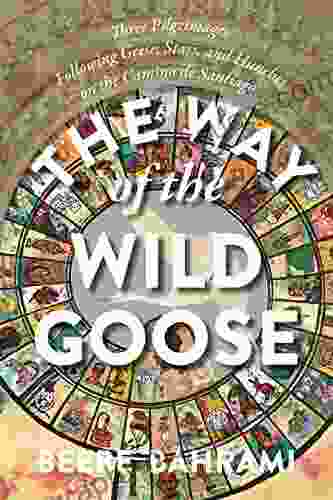
 Josh Carter
Josh CarterThe Way of the Wild Goose: A Journey of Embodied Wisdom...
The Way of the Wild Goose is an ancient...

 Allen Parker
Allen ParkerMastering the Art of Bean Fly Casting: A Comprehensive...
Fly fishing,...

 Aaron Brooks
Aaron BrooksSolving the Homework Problem by Flipping the Learning
What is flipped...

 Fletcher Mitchell
Fletcher MitchellThe Jane Butel Library: A Renewed Source of Knowledge and...
The Jane Butel...
5 out of 5
| Language | : | English |
| File size | : | 5405 KB |
| Text-to-Speech | : | Enabled |
| Screen Reader | : | Supported |
| Enhanced typesetting | : | Enabled |
| Word Wise | : | Enabled |
| Print length | : | 275 pages |


